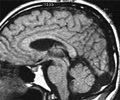The risk of neural tube birth defects in a developing embryo increases in the absence of a critical enzyme in the folic acid metabolic pathway, according to a new study.

However, scientists still do not fully understand how folic acid decreases neural tube defects, or why folic acid supplementation does not eliminate birth defects in all pregnancies.
"Now, we've found that mutation of a key folic acid enzyme causes neural tube defects in mice," said Dean Appling, professor of biochemistry in the College of Natural Sciences. "This is the clearest mechanistic link yet between folic acid and birth defects."
Appling and his colleagues published their research in the Jan. 8 issue of Proceedings of the National Academy of Sciences (PNAS).
The scientists made the discovery using mice that lack a gene for a folic acid enzyme called Mthfd1l, which is required for cells to produce a metabolite called formate. Embryos need formate to develop normally.
"This work reveals that one of the ways that folic acid prevents birth defects is by ensuring the production of formate in the developing embryo," said Appling, "and it may explain those 30 percent of neural tube defects that cannot be prevented by folic acid supplementation."
Advertisement
Appling said that he and his colleagues would like to use the mouse system to begin looking for nutrients that could be delivered to pregnant mothers to prevent those neural tube defects that cannot be prevented by folic acid.
Advertisement
Folic acid was discovered at The University of Texas at Austin in the 1940s by biochemists Esmond Snell and Herschel Mitchell. The U.S. has fortified all enriched cereal grain products with folic acid since 1996 to ensure that women of childbearing age receive adequate quantities of the vitamin.
Source-Eurekalert















